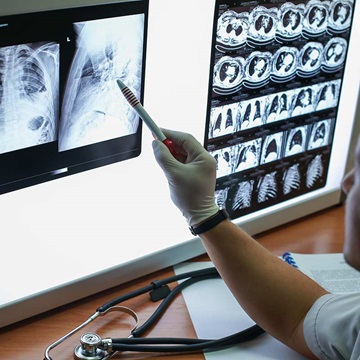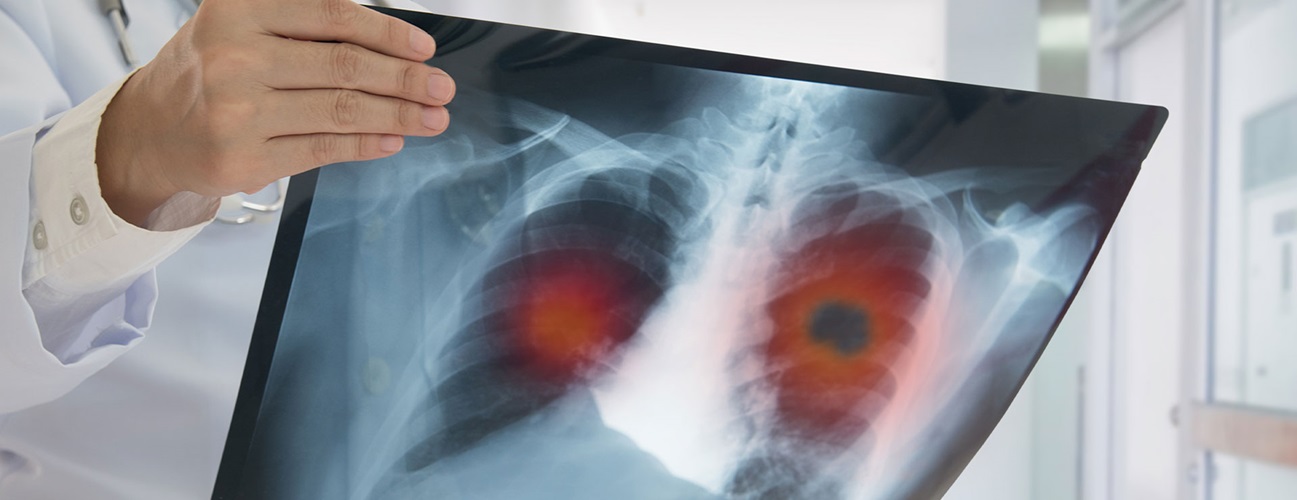Lung Cancer Screening
What You Need to Know
- Early detection of lung cancer can be lifesaving.
- The most common types of screening include low-dose spiral computed tomography (LDCT) scans, X-rays and sputum cytology tests.
What is lung cancer screening?
Catching lung cancer early and treating it quickly leads to the best hope of beating the disease. But, most often, lung cancer waits to show signs and symptoms until the cancer is in advanced stages, when it’s harder to treat. Lung cancer screening — a test that looks for cancer before you have symptoms — offers hope for early detection, when surgery is a potential cure.

Advances in Screening for Lung Cancer
Historically, doctors used standard chest X-rays to check for signs of lung cancer, such as a suspicious spot. While traditional X-rays do help detect lung cancer, they offer less detailed pictures from one angle as compared with more advanced imaging technology, like CT scans, that use X-rays from multiple angles to make detailed images of the lungs.
A low-dose helical CT scan is a quick, painless exam that takes multiple 3-dimensional pictures of the chest moving in a spiral motion around the body. As compared to a traditional CT scan, a low-dose CT scan produces five times less radiation.
In a 2002 clinical trial sponsored by the National Cancer Institute, lung cancer researchers tested over 53,000 current or formers smokers between the ages of 55 and 74 with a smoking history of at least a pack a day for 30 years. The study found that participants who received low-dose CT scans had a better chance of survival than participants who received standard chest X-rays.
In December 2013, the U.S. Preventive Services Task Force, an independent group of national experts on prevention and evidence-based medicine, began recommending annual screening for lung cancer with low-dose CT in people at high risk of developing lung cancer.
“Because of the National Lung Screening Trial and support from leaders in lung cancer treatment and prevention, low-dose CT scans of the chest are now a standard of care in hospitals across the country, including Johns Hopkins,” says Russell Hales , a board-certified radiation oncologist and director of the multidisciplinary clinic in the Lung Cancer Program at the Johns Hopkins Kimmel Cancer Center.
Former Smokers: What's Your Risk of Lung Cancer?

You quit smoking years ago — maybe even decades ago — and in the years since, you’ve lived a healthier lifestyle. Still, you can’t help wondering if your old habits might have left you with a higher risk of lung cancer.
Who should be screened for lung cancer?
Lung cancer screening is for people at high risk of developing lung cancer so it can be caught in an early stage, when the chances of beating this disease are possible. This high-risk group includes people who fit all of the following criteria:
-
Have a history of heavy smoking (at least a pack a day for 30 years).
-
Are current smokers or former smokers who quit within the past 15 years.
-
Are between the ages of 55 and 80.
If you suspect you’re at high risk for lung cancer, it’s important to talk to your primary care physician, who can help figure out if you should be screened for lung cancer. Read more about lung cancer screening at Johns Hopkins.






